 As I noted at the conclusion of my previous post, I’m convinced that the future of the illustrated book lies in the ebook or some other form of electronic delivery. And, much as I love physical books in general and photography books as objects in particular, I don’t consider that a bad thing. To the contrary.
As I noted at the conclusion of my previous post, I’m convinced that the future of the illustrated book lies in the ebook or some other form of electronic delivery. And, much as I love physical books in general and photography books as objects in particular, I don’t consider that a bad thing. To the contrary.
BookExpo America
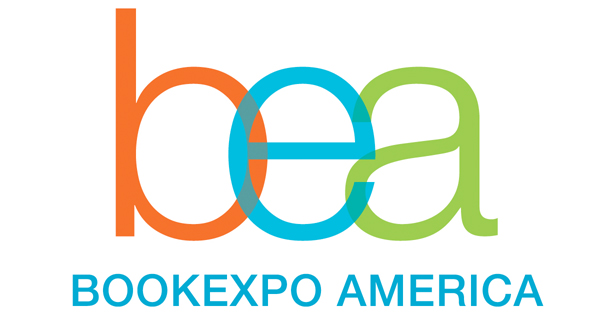 I came to that conclusion some time back, finding confirmation in my visit to BookExpo America (BEA) at the Jacob Javits Convention Center in Manhattan in late May ― shortly before my local branch library reopened, and in the middle of my rereading of William H. Wisner’s Whither the Postmodern Library? BEA is the publishing world’s biggest U.S. blowout, a massive trade fair held here annually. The cavernous Javits Center fills up with display booths featuring the wares of publishers large and small, plus providers of assorted publishing and library services, with a smattering of companies who make the kinds of impulse-buy book-related or other items that bookstores commonly display by their cash registers. There are book signings and lectures by authors, seminars on self-publishing, and related events.
I came to that conclusion some time back, finding confirmation in my visit to BookExpo America (BEA) at the Jacob Javits Convention Center in Manhattan in late May ― shortly before my local branch library reopened, and in the middle of my rereading of William H. Wisner’s Whither the Postmodern Library? BEA is the publishing world’s biggest U.S. blowout, a massive trade fair held here annually. The cavernous Javits Center fills up with display booths featuring the wares of publishers large and small, plus providers of assorted publishing and library services, with a smattering of companies who make the kinds of impulse-buy book-related or other items that bookstores commonly display by their cash registers. There are book signings and lectures by authors, seminars on self-publishing, and related events.
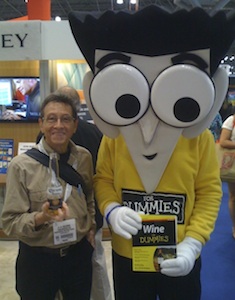
A. D. Coleman hoists a brewski with the “Wine for Dummies” mascot, BookExpo America, Javits Center, NY, 5-29-13. Photographer unknown. Copyright 2013 by A. D. Coleman.
Most of the participating publishers continue to prioritize printed books, assuring me that there will be ink on paper for the rest of my life at least, even if I achieve centenarian status. Yet, though the publishing industry as a whole observed the advent of digital systems with the incomprehension of carriage horses contemplating a Model T, they have belatedly opted to get with the program. So they have author pages at their house websites, separate domain names and sites for new titles, hosted online chats with authors. Instead of physical galley proofs, they send pdfs to reviewers.
And, more and more often, they offer ebook versions of printed books ― not just books comprised primarily or exclusively of words, but a wide assortment of image-text books (cookbooks, travel books), plus a number of works that fall into the narrower category of visual books, by which I mean nothing more complicated than books that devote most or all of their content space to images. Some constitute simple repurposing of the material in the print version (or vice versa); some qualify as enhanced ebooks, meaning that they add links to external content (videos, forums), incorporate audiovisual material, and otherwise augment their print versions with some of the features that the digital environment enables.
•
Two sections of BEA 2013, positioned catty-corner to each other across the hall, spoke volumes (pun intended) about the change within the industry. At the front of the hall, on its north side, I found a bunch of booths representing remainder houses ― those outlets that sell discontinued (remaindered) books, usually at steep discounts. The remainder house, along with the remainder table in a bookstore, represents a book’s last gasp; from there it’s a short step to getting pulped and recycled. (Under Richard Nixon’s administration, manufacturers ― including publishers ― lost the ability to depreciate and eventually write off unsold inventory, making it cheaper to dump slow-selling items that to maintain a backlist.)
As an addictive book buyer who often purchases remaindered books, I welcome this bounty. As an author, I found it chastening to see so many books in the publishing equivalent of the animal shelter, hoping for adoption, just one step away from euthanasia. I felt their pain: Several books of mine have gone that route ― The Grotesque in Photography (1977), still the only study of that mode, and Looking at Photographs: Animals (1995), my book for children age 8-12.
So when, on occasion, I stand in a showroom for visual books in general and photography books in particular ― say, the powerHouse Arena in Brooklyn’s DUMBO district ― I do so with distinctly mixed feelings. Perusing table after table laden with heavy tomes from powerHouse and other publishers, all handsomely produced, printed in four colors on coated stock, priced at $20 and up, can feel, to someone like myself who sometimes provides content for such projects, and perhaps to those who design and publish them, like joining a large, boisterous family.
At the same time, as a critic and historian who has reviewed many such books, observed the market for them for almost half a century, and knows the obscurity and financial failure that await 95 percent of them, I can view the same scene in a much different light ― as a morgue, even a graveyard, albeit an elegant one.
•
Diagonally across the Javits, at the back on the south side, BEA had positioned what they designated as the “Digital Discovery Zone (D2Z),” a “revamped and expanded exhibit area of leading digital providers.” Here, clustered together, I found makers of ebook readers and suppliers of such books (Sony Reader Store), providers of print-on-demand and/or ebook production services (BookBaby), companies offering software for generating same (Book Connect, EBK), and sometimes all of those bundled together under one roof (Amazon’s CreateSpace, iPublishCentral).
If this sounds like a ghetto, it was a self-imposed one, an opt-in decision on the part of those aggregated there. Because, elsewhere on the expo floor, I found IngramSpark (POD and ebook production and distribution, plus warehousing and distribution of printed editions), Kobo (POD and ebook production and distribution, plus tablets and ebook readers), Blurb (POD production, much favored by makers of illustrated books) ― even social-media websites for authors, such as Widbook, where you build an ebook online and solicit critiques thereof from other registered users while it’s in progress.
•
I expect the digital component of this expo to expand and the print component thereof to shrink over the coming years. Eventually, I predict, the print-only publishers will huddle in a distant corner, and the digital publishers will rule the floor. For similar reasons, I expect specialized photo-book publishers, and the authors of such works, to move steadily toward ebook format. More on that next time.
This Is Between Us
As I walked down one of the BEA aisles on my way out, someone handed me a folded paper containing a fragment of This Is Between Us, by Kevin Sampsell, forthcoming in November from Tin House Books. Opened, set in a script-like font, it reads:
You have a locket that has a photo of you with your brother and mom and dad. You’re nine years old and your hair is in a ponytail that juts up behind you just under your dad’s chin. You have other lockets that have other old photos in them too ― you with your best friend, you with your family dog, you with Santa Claus.
I asked you why you don’t have lockets with current photos in them. “Because these are like treasures,” you say. “Because I admire the innocence in these pictures. Because I like to wear them close to my heart. Because people are always curious what I was like before now.”
I gave you a locket with an old photo of me, when I was about fifteen. “I like this so much,” you said, tracing your fingers around the photograph. “I feel like this answers a lot of questions for me. Like I knew you then, even if I didn’t.”
•
This post supported by a donation from the Estate of Lyle Bongé.


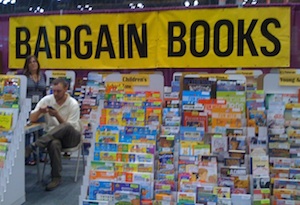
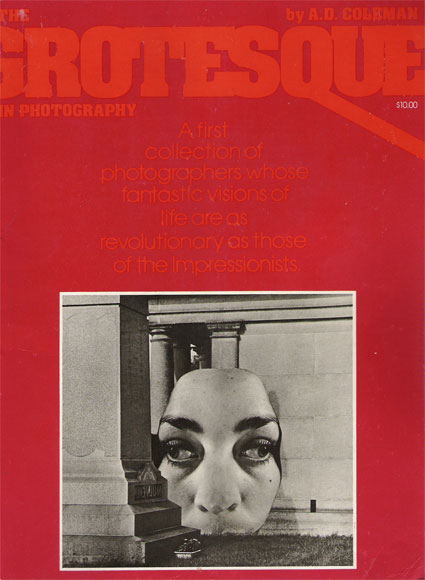


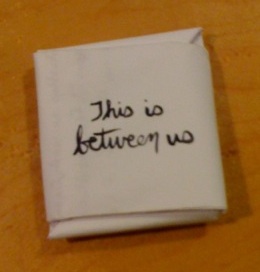




Leave a Comment